CCTV recordings kept secret by the Turkish government have confirmed the testimony of dozens of gendarmes who were subjected to torture and abuse in 2016 at the hands of thugs who were working for the police special forces, Nordic Monitor reported.
The recordings, obtained by Nordic Monitor, tell the tale despite the fact that many of the video cameras were destroyed or tampered with by the police while torture and abuse were taking place. The evidence also refutes the Turkish government’s claim that the gendarmes who were detained sustained bruises and injuries because they clashed with the police on July 15/16, 2016 during a coup attempt.
What was a routine, end of the week on Friday morphed into a chaotic night on July 15 when officers at Gendarmerie General Command headquarters in Ankara thought they had come under an attack by terrorists, and unidentified gunmen started shooting at the building with without warning. The gendarmerie, a law enforcement agency in Turkey that maintains order in rural areas, was already on edge because of recent terrorist attacks in the heart of the Turkish capital that targeted military personnel and civilians.
A series of terrorist attacks in 2015 and 2016, blamed on the Islamic State in Iraq and Syria (ISIS) and the outlawed Kurdistan Workers’ Party (PKK), had rattled Turkey, in particular the major cities of Istanbul and Ankara. One vehicle suicide bombing in the Turkish capital targeted military residential housing in the heart of the city.
A flurry of intelligence reports suggested that terrorist groups were looking for further opportunities to launch attacks on military installations, prompting the General Staff to issue orders to beef up security in and around such facilities.
On the night of July 15 and the morning of the next day, the Gendarmerie General Command came under fire by what turned out to be police special forces teams that did not bother to identify themselves when they started shooting at the building. Snipers who were positioned on high rise residential buildings nearby took shots at guards and buildings when no such action was warranted.
In the end the gendarmes turned themselves in peacefully amid the chaotic events unfolding on July 15, which were branded by the government as a failed coup but believed by many to have been a false flag cooked up by President Recep Tayyip Erdoğan and his intelligence and military chiefs in order to conduct a mass purge of the army.
Those who were taken into custody at the building faced immediate abuse and torture at the hands of thuggish police officers who destroyed or turned the cameras to a blind angle inside and outside the building in order to mask murder, torture, arson and looting.
The Gendarmerie General Command has some 330 security cameras inside and outside the building that monitor activities round the clock. The prosecutor was supposed to immediately secure the crime scene and collect all the evidence after the situation was contained.
Yet the police collected the recordings on August 16, a month later, and only a limited amount of footage was recovered according to the official communiqué incorporated into the case file. Most of the footage mysteriously disappeared from the hard drives. In subsequent trials, the defendants revealed how the police deleted crucial sections from the footage that would have shed light on what really happened that night.
However, even the limited amount of footage that was recovered was enough to reveal the torture of detainees and the destruction of at least 28 cameras that covered the areas where the abuse and torture took place.
The police also tried to torch the place after everybody was removed from the building. According to a fire department report, fires were deliberately set on the second, third and 11th floors of the building. The fire was blamed on alleged coup plotters when in fact it was the police who tried to burn the building down after all the floors were vacated.
According to CCTV footage of Atalay Hall, the recording was cut short at 10:22 a.m. The rest of the footage that would have shown how the police started the fire was deleted. However, a still shot taken from the deleted footage and included in the case file displaying a timestamp of 10:54 showed smoke coming out of the hall, meaning the police had all the footage but did not share the part between 10:22 and 10:54 with the court in order to cover up its arson.
According to footage obtained and reviewed by Nordic Monitor, the following events took place.
One of the two cameras located on the first floor that covered the stairwell which goes from the commander’s office to the ground floor shows 59 gendarmes going to the ground level with their arms in the air, unarmed and totally peaceful at 09:17 hours on the morning of July 16, 2016. As they reach the ground floor, they are seen lying face down as instructed.
Around 09:20 hours, police officers in civilian clothes and holding high-powered rifles start roaming around the officers who stayed put lying face down on the floor. Within seconds, the police start kicking and punching officers in the head, back and other parts of the body, at times using rifle butts for the beatings.
The abuse went on for several minutes before the gendarmes were ordered to strip down to their underwear. At 09:23 hours according to the time stamp, one policeman notices the camera on the ceiling and orders another one to go and destroy it. The recording stopped after the officer apparently struck and damaged it.
Another CCTV video camera, located at the right side of the commander’s entry gate on the ground level, showed what the previous camera partially covered from the first floor: gendarmes coming down the stairs and spread out on the entire floor, lying in what was called the Honor Hall, which recognizes past heroes in the gendarmerie.
The camera located at the left side of the ground floor showed the same at 09:17 hours from another angle as officers come down the stairs and lie on the floor with their hands on their heads. Again, no resistance is seen, and the gendarmes comply with the orders given by the police.
At 09:22 hours the same camera showed officers stripping down to their underwear under orders. A police officer who wasn’t wearing a mask noticed a camera up on the ceiling and appears to be bothered by its presence. Within seconds, the camera went dark after receiving a blow from another police officer who was not seen on film.
A camera that covered the outside entry gate showed broken glass on the ground and armored police vehicles parked in front of the main gate. The time stamp on the recoding is 09:23. A police officer with his face partially covered picks up a brass barrier he found at the entry and walks toward the camera. The footage shows him hitting the camera with the piece of brass. He apparently thought he managed to destroy it, but the camera, tilted to the right as a result of the blow, continued recording.
Within seconds, the same man appears to have been warned by a colleague who likely noticed that the camera was still functioning and asks him to finish it off. The man comes back, this time with the cover on his face down to his neck, making his face clearly recognizable. He hits the camera with the stand again, this time dislodging it. Amazingly the camera continued to function in a distorted upside down view from an angle, although it was dangling in the air, probably held by a cable.
In the corner of the distorted angle, the camera later showed the detainees in their underwear ushered out of the building with police kicking and hitting them by the door. Some fall to the ground from the strikes. The victims are seen trying to cover their heads to protect themselves from the punches.
A camera located on the left side of the main command entrance showed dozens of police officers gathering at the entry and at 09:18 hours, somebody hit the camera and turned its lens into the air. It was still functioning with a flag post and the facade of the building seen in the footage.
The rotating camera that viewed the area around the garrison entry and the guard station showed at 09:02 hours three officers in their underwear with their hands in the air walking past the iron gate under orders from the police. They were ordered to face the wall by the door. The camera view, although partially blocked by the guard station, nevertheless revealed the abuse they sustained at the hands of the police right there on the spot. They are pressed to the wall in a 30-degree stress angle with their body weight putting pressure on their hands, which were placed on the wall.
Several police officers are seen kicking them in the back and forcing them to widen the angle even further by pushing their legs further away from the wall. One police officer forces one gendarme down with the barrel of a rifle pressed hard on his back. Another policeman hits a gendarme on the head. One police officer kicked a gendarme in the stomach, causing him to convulse from the pain, according to the footage.
At 09:09 hours, the same camera showed two busses full of gendarmes who were taken through the gate while the abuse of three of them at the wall by the entry continues, with police punching and kicking them.
In the right angle of the footage, a gendarme is seen lying on the ground between the guard station and an ATM machine, to the right of the entry gate. He appears to be wounded and his hands are handcuffed. A minute later, a police officer orders him to crawl out.
As he makes his way to the gate, dragging his body through broken glass scattered on the road, police officers simply watch him suffer. When he manages to get to the gate two minutes later, one officer is seen stomping on his head with his boot. Others take turns kicking him in the back, stomach and legs. One even strikes him with a barrel of a rifle.
He was later picked up off the ground. The footage shows him clearly disoriented and dizzy from the blow. He has difficulty standing on his feet. Next, several officers try to tear his uniform apart, with one pulling him to a corner by his collar. His face is covered in blood, and he is later hauled away.
At 08:22 hours, a group of gendarmes are seen being taken away from the basement where they had taken refuge from the police fire.
Some of the footage obtained from the building also revealed police looting of the gendarmes’ personnel possessions. In a video recorded in the hall in front of a conference room, two police officers are seen going through phones and carrying bags left behind by the gendarmes on the glass case. One picks up a watch, while other puts a necklace he found in his pocket. When he looks up and notices the camera, he throws the necklace back on the table.
Other footage shows how gendarmes were beaten and kicked as they were boarding a bus that was brought to take them to a detention site.
The police deliberately targeted some members of the gendarmerie with the clear intent to kill, leading to casualties. For example, Capt. Yasin Özdemir, a staff officer at the Gendarmerie General Command, was shot six times and killed on the spot. The footage shows the officer surrendering half naked and with his hands in the air in front of gendarmerie headquarters early in the morning of July 16. Four still shots from the CCTV video recording at the main entrance of the headquarters show a group of soldiers led by Capt. Özdemir moving towards the guardhouse. The soldiers with their hands up and half naked are seen in a clear sign of surrender and posing no threat to others.
One of the still shots from the CCTV video footage indicates that Capt. Özdemir reached the main gate first, with both his hands up. In a second photo it is clear that Özdemir was gunned down as he stepped out of the guardhouse, with the remaining soldiers squatting on the ground and appearing terrified by his murder.
According to multiple witness statements in court hearings, the torture and abuse continued at the detention sites where the gendarmes were taken. They were denied food and water for two days, with no access to lawyers or family members. They were beaten, electrocuted, burned with acid and threatened with rape for days.
Torturers in Turkey were protected by a government decree issued by President Erdoğan that provided blanket immunity for officials who were involved in coup investigations. Decree-law No. 667, issued by the government on July 23, 2016, granted sweeping protection for law enforcement officers in order to prevent victims from pressing complaints of torture, ill treatment or abuse against officials. There were multiple cases in which Turkish prosecutors refused to investigate torture allegations, citing this decree-law, or KHK (Kanun Hükmünde Kararname).
Article 9 of this KHK stated that “legal, administrative, financial and criminal liabilities shall not arise in respect of the persons who have adopted decisions and fulfill their duties within the scope of this decree-law.” The decree was criticized by human rights organizations for being a clear breach of articles of the International Covenant on Civil and Political Rights (ICCPR) as well as the European Convention on Human Rights, to which Turkey is a party, yet it was never annulled. In fact, the Turkish parliament passed the decree into law on October 18, 2016.
As of today, no prosecution has been initiated against people who tortured detainees at unofficial sites despite multiple complaints filed by the victims and their lawyers.
A delegation from the European Committee for the Prevention of Torture and Inhuman or Degrading Treatment or Punishment (CPT), a Council of Europe-affiliated body, was in Turkey to conduct inspections between August 28 and September 6, 2016 and recorded some of the victims’ statements in its report. The delegation’s visit came amid widespread allegations first raised by Amnesty International, which stated that it had collected credible evidence that detainees in Turkey were beaten, tortured and on some occasions raped in official and unofficial detention centers across the country.
However, the details of the CPT report were never made public because Turkey vetoed the publication of the report and has not lifted its objection since 2016. In fact CPT President Mykola Gnatovskyy stated in 2017 that even though he “[wanted] to discuss the findings,” he could not comment on the report due to Ankara’s decision.

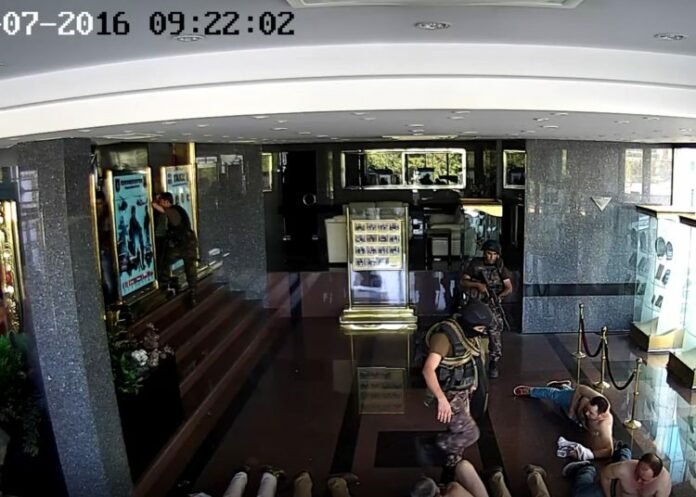
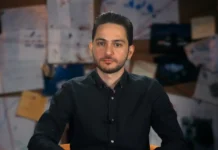
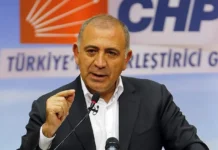



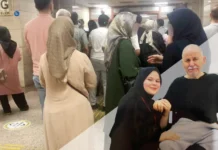





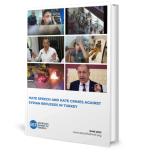


[…] Fonte: http://stockholmcf.org/cctv-recordings-kept-secret-from-the-public-reveal-torture-and-abuse-in-turk… […]